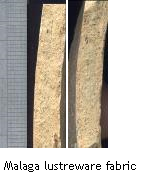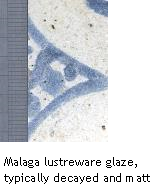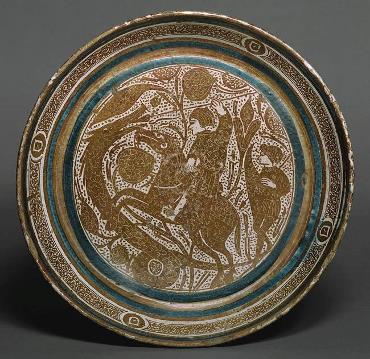Malaga
Malaga Lustreware

Over-all tin glazed wares with painted lustre (gold-colour) decoration were produced in Malaga at least from the 13th century onwards. Dating of Malagan lustreware is far from secure, although for the moment the earliest pottery from well dated contexts is late 13th century. This date chimes with the numerous documentary references to lustreware production in Malaga, of which there are many in the 13th and 14th centuries. The end date for Malagan lustreware is also problematic, but it may coincide with the Christian ‘reconquest’ of the city in 1487. Other Andalusian centres may have been producing lustreware (for example Granada), but these are uncharacterised yet.

In contrast to the fine Valencian fabrics, which contain few inclusions visible to the naked eye, Malagan products, though thin-walled, are usually filled with visible inclusions; the fabric colour varies between light orange, deep red and greenish-grey, with abundant red and black inclusions (including schist) which vary in frequency from sherd to sherd, and in size from specks to grains up to 4mm across.
Two main stages of production are traditionally identified:
-Early Lustreware of the late 13th and 14th centuries
-Late Lustreware of the 15th century.

Basin, late 14th or 15th century? With Nasrid (Granada) coat of arms. © The Metropolitan Museum of Art 41.100.173
